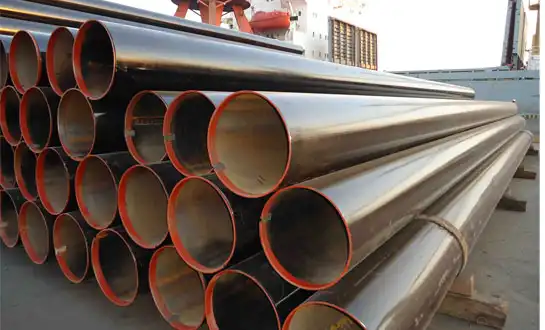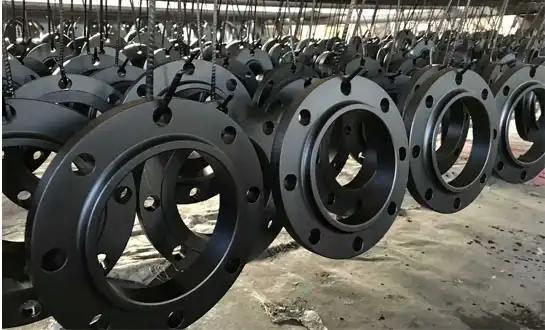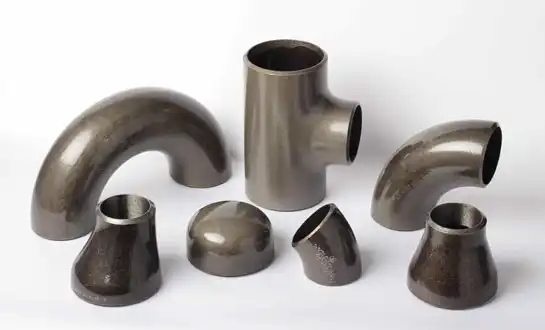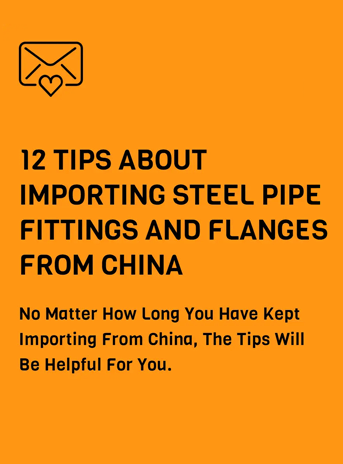The Role of High-Pressure Pipe Tees in Oil & Gas Pipelines
High-pressure pipe tees are important parts of contemporary oil and gas pipeline systems. They let fluid flows split and join across complicated distribution networks. These sophisticated T-shaped fittings control multi-directional flow patterns that are necessary for moving crude oil and natural gas over long distances while keeping the structure strong even in harsh working circumstances. To make pipelines safer, more efficient, and more reliable in the long run in harsh offshore and onshore locations, you need to know how high-pressure pipe tees work and what their design specs are.
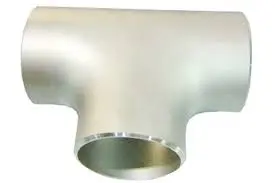
Design Standards and Technical Specifications of High-Pressure Pipe Tees
Compliance with International Industry Standards
High-pressure pipe tees must adhere to rigorous international standards that establish minimum requirements for materials, dimensions, pressure ratings, and testing protocols. The ASME B31.3 standard governs pressure piping in process applications, while ANSI/ASME B16.5 provides comprehensive specifications for steel pipe flanges and flanged fittings. These high-pressure pipe tees are manufactured according to API specifications when extreme pressure conditions exceed standard ratings. Organizations including the International Organization for Standardization (ISO) and the American Society of Testing and Materials (ASTM) establish additional guidelines that manufacturers must follow for consistent quality and performance. Compliance with these standards ensures that high-pressure pipe tees can safely withstand the demanding conditions present in deep-sea drilling operations, subsea pipelines, and high-pressure transmission lines. Each certified component undergoes rigorous hydrostatic testing and ultrasonic inspection to verify structural integrity before deployment in critical applications.
Material Composition and Mechanical Properties
The manufacturing of high-pressure pipe tees requires careful material selection to ensure durability under extreme operational stresses. Carbon steel remains the primary material choice for standard applications, offering exceptional tensile strength and proven performance across decades of industry use. Alloy steel compositions provide enhanced resistance to elevated temperatures and corrosive environments, particularly in applications involving hydrogen sulfide exposure or deep-water installations. High-pressure pipe tees must maintain specified yield strength ratings while demonstrating excellent weldability and fatigue resistance. The material composition directly influences the fitting's ability to accommodate thermal cycling, pressure fluctuations, and mechanical stress without experiencing premature failure or deformation. Advanced metallurgical analysis ensures that selected materials for high-pressure pipe tees maintain their engineering properties throughout the expected service life.
Pressure Rating Classifications and Design Parameters
High-pressure pipe tees are manufactured in multiple pressure classifications to accommodate various operational requirements. Standard pressure ratings range from ANSI 150 through ANSI 2500, with API specifications extending into ultra-high-pressure categories reaching 30,000 pounds per square inch. The wall thickness, bore diameter, and stress calculations for each high-pressure pipe tee are precisely engineered to maintain safe operating margins based on design pressure, design temperature, and service conditions. Engineers select appropriate pressure classes during the design phase to ensure optimal performance and cost-effectiveness. Temperature considerations significantly affect the pressure rating capabilities of high-pressure pipe tees, as materials exhibit reduced strength at elevated temperatures. Proper pressure class selection prevents leaks, separation failures, and catastrophic system failures in critical transmission applications.
Operational Functions and Flow Management Capabilities
Flow Distribution and Integration Applications
High-pressure pipe tees facilitate complex flow patterns throughout integrated pipeline networks by enabling simultaneous division and combination of fluid streams. In gathering systems, these fittings direct crude oil or natural gas from multiple sources into consolidated transmission lines, simplifying collection infrastructure while reducing overall system complexity. Conversely, distribution applications utilize high-pressure pipe tees to redirect flows from main transmission pipelines toward specific processing facilities, storage terminals, or end-user connections. The three-port configuration of high-pressure pipe tees accommodates inlet and outlet configurations that optimize flow geometry and minimize pressure drop across the junction point. Strategic positioning of these fittings throughout the pipeline network enables efficient traffic management while maintaining precise pressure control in demanding operational scenarios. Advanced computational fluid dynamics analysis determines optimal pipe tee sizing and placement to achieve desired flow characteristics.
Pressure Regulation and System Integration
Within integrated pipeline systems, high-pressure pipe tees work in conjunction with valves, regulators, and monitoring equipment to maintain safe operating pressures throughout transmission networks. These fittings provide the structural foundation necessary for secure attachment of branch lines that carry monitoring instruments, pressure gauges, and emergency isolation valves. The robust construction of high-pressure pipe tees ensures reliable performance as load-bearing components that support auxiliary equipment and withstand mechanical stresses from vibration and thermal movement. Pressure relief systems often incorporate high-pressure pipe tees as critical connection points where excess pressure diverts to alternative pathways, preventing dangerous pressure buildup. Integration with automated control systems enables dynamic pressure management that responds to fluctuating demand conditions across distribution networks. The mechanical reliability of high-pressure pipe tees directly impacts the effectiveness of pressure regulation strategies employed throughout modern pipeline infrastructure.
Emergency Response and System Redundancy
Pipeline systems incorporating high-pressure pipe tees benefit from enhanced redundancy and emergency response capabilities unavailable in simpler linear configurations. Emergency bypass systems utilize tees to create alternative flow pathways that prevent complete system shutdown during maintenance operations or equipment failure events. Secondary isolation points created by high-pressure pipe tees enable rapid containment of leaks or contamination incidents without affecting adjacent pipeline segments. The strategic placement of isolation valves at high-pressure pipe tees locations allows emergency response personnel to quickly establish safe conditions during crisis situations. Modular system architecture incorporating high-pressure pipe tees enhances operational flexibility and enables systematic expansion of pipeline networks as production demands increase. Network redundancy provided by tee-based configurations significantly improves overall system resilience and reduces vulnerability to single-point failures.
Material Selection Considerations and Environmental Compatibility
Corrosion Resistance and Environmental Durability
Offshore and subsea pipeline applications demand exceptional corrosion resistance from high-pressure pipe tees exposed to aggressive saltwater environments, dissolved gases, and extreme pressure conditions. Stainless steel compositions provide superior corrosion protection compared to standard carbon steel, particularly in applications involving hydrogen sulfide contamination or high dissolved oxygen levels. High-pressure pipe tees manufactured from duplex stainless steel demonstrate enhanced resistance to stress corrosion cracking while maintaining exceptional mechanical strength. Advanced surface treatments and protective coatings extend the service life of high-pressure pipe tees in hostile environments, reducing maintenance requirements and preventing premature failure. Cathodic protection systems work in conjunction with material selection to provide comprehensive corrosion mitigation strategies for subsea installations. Material compatibility considerations ensure that high-pressure pipe tees function reliably alongside other pipeline components without galvanic corrosion or accelerated degradation mechanisms.
Temperature Extremes and Thermal Cycling Performance
Pipeline systems operating across temperature ranges from sub-zero Arctic conditions to elevated production temperatures require high-pressure pipe tees engineered for thermal resilience. Low-temperature service applications demand materials with adequate impact resistance and fracture toughness characteristics that prevent brittle failure mechanisms. High-pressure pipe tees designed for elevated temperature applications incorporate alloy compositions that maintain mechanical properties without experiencing stress relaxation or creep deformation. Thermal cycling stress from repeated temperature fluctuations can cause fatigue crack initiation if high-pressure pipe tees lack appropriate material characteristics. Advanced materials research has developed specialized nickel-based alloys that enable high-pressure pipe tees to function reliably in ultra-high-temperature and ultra-high-pressure applications. Careful material selection ensures that high-pressure pipe tees maintain dimensional stability and mechanical performance throughout extended service intervals regardless of temperature variations.
Chemical Compatibility and Product Characteristics
The fluid products transported through pipelines present unique chemical compatibility challenges that influence material selection for high-pressure pipe tees. Crude oil contains dissolved gases including hydrogen sulfide and carbon dioxide that promote corrosion of susceptible materials, necessitating careful alloy selection for high-pressure pipe tees. Natural gas pipelines may experience condensation of water and hydrocarbons that create acidic environments capable of attacking standard carbon steel. High-pressure pipe tees fabricated from appropriate alloys resist pitting corrosion, stress corrosion cracking, and general corrosion mechanisms triggered by chemical constituents in transported fluids. Inhibitor programs and protective coatings complement material selection strategies to ensure long-term reliability of high-pressure pipe tees in chemically challenging environments. Proper material compatibility assessment prevents unexpected failures and extends the economic service life of expensive pipeline infrastructure.
Conclusion
High-pressure pipe tees represent essential components within sophisticated oil and gas pipeline infrastructure, enabling efficient flow management, pressure regulation, and system redundancy across complex distribution networks. Proper material selection, compliance with international standards, and strategic placement of these fittings ensure safe, reliable operation under extreme conditions. RAYOUNG maintains industry leadership through consistent quality, ISO 9001:2015 certification, and GOST-R compliance, delivering dependable steel pipe fittings that support critical infrastructure across domestic and global markets.
FAQ
1. What Distinguishes High-Pressure Pipe Tees from Standard Fittings?
High-pressure pipe tees are engineered to withstand significantly greater operational stresses than standard fittings through advanced material selection, precise wall thickness calculations, and rigorous quality control protocols. These components incorporate design features that minimize stress concentration points and accommodate complex loading scenarios. High-pressure pipe tees must achieve pressure ratings ranging from 150 to 2500 ANSI classifications depending on application requirements.
2. How Do Environmental Conditions Affect High-Pressure Pipe Tee Performance?
Offshore and subsea installations expose high-pressure pipe tees to aggressive corrosion mechanisms, extreme pressure gradients, and significant temperature variations that impact material selection and design specifications. Stainless steel and duplex alloy compositions provide enhanced environmental durability compared to standard carbon steel. High-pressure pipe tees in harsh environments require protective coatings and cathodic protection systems to ensure reliable long-term performance.
3. What Role Do High-Pressure Pipe Tees Play in Pipeline Safety Systems?
High-pressure pipe tees serve as critical connection points for emergency isolation valves, pressure relief systems, and monitoring equipment that collectively form integrated safety infrastructure. Strategic placement of high-pressure pipe tees enables rapid containment of leaks and emergency response capabilities. These fittings provide the structural foundation necessary for attachment of auxiliary equipment without compromising pipeline integrity.
4. Why Is Standards Compliance Critical for High-Pressure Pipe Tee Applications?
ASME B31.3, ANSI/ASME B16.5, and API specifications establish minimum requirements for high-pressure pipe tees that ensure consistent safety performance across diverse applications and geographic regions. Compliance with these standards guarantees that high-pressure pipe tees achieve specified pressure ratings and possess appropriate mechanical properties. Rigorous testing and certification verify that high-pressure pipe tees meet demanding performance criteria before field deployment.
HEBEI RAYOUNG PIPELINE: Leading Manufacturer of Premium High-Pressure Pipe Tees
At HEBEI RAYOUNG PIPELINE TECHNOLOGY CO., LTD., we believe that excellent infrastructure starts with dependable materials. Our expertise in manufacturing superior high-pressure pipe tees stems from decades of dedicated research and uncompromising quality standards. As a leading pipes and fittings manufacturer, we supply premium steel pipes and fittings that exceed industry expectations and withstand the most demanding operational environments. Each high-pressure pipe tee undergoes comprehensive testing including hydrostatic verification, ultrasonic inspection, and dimensional verification to ensure compliance with international standards. Our ISO 9001:2015 certification and GOST-R compliance demonstrate our commitment to consistent excellence across all product categories. We understand that your pipeline infrastructure represents critical capital investment requiring absolute reliability—RAYOUNG delivers exactly that through innovative engineering solutions and uncompromising attention to detail. Whether you require standard carbon steel components or specialized alloy compositions for extreme environments, our comprehensive product range accommodates every design specification. Our global distribution network ensures rapid delivery of certified high-pressure pipe tees to projects worldwide, minimizing supply chain delays and project interruptions. Contact our technical team today to discuss your specific requirements and discover how RAYOUNG's expertise can enhance your pipeline performance. Reach out to us at info@hb-steel.com for detailed product specifications, pricing information, and application consultation.
References
1. American Society of Mechanical Engineers. "ASME B31.3 Process Piping." Standards Development Committee, 2020.
2. American National Standards Institute. "ANSI/ASME B16.5 Steel Pipe Flanges and Flanged Fittings." Classification and Pressure Ratings, 2017.
3. American Petroleum Institute. "API Specification 5L Line Pipe." Forty-fifth Edition, 2019.
4. International Organization for Standardization. "ISO 3183 Petroleum, Petrochemical and Natural Gas Industries: Carbon and Alloy Steel Pipes." Technical Specifications, 2018.
5. ASME Committee. "ASME PCC-2 Repair of Pressure Equipment and Piping." Fitness-For-Service Guidelines, 2015.
6. Society of Petroleum Engineers. "Pipeline Design, Construction, and Operation Standards." Technical Publications Division, 2021.

Need a quote? Want to see samples? Just say hello. We’re friendly. We’re fast. And we’re ready when you are.
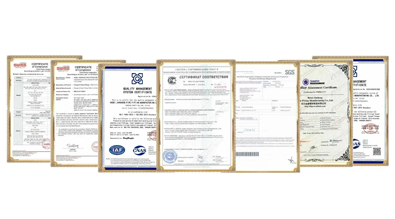
Welcome to RAYOUNG – Strong Pipes, Stronger Promise
